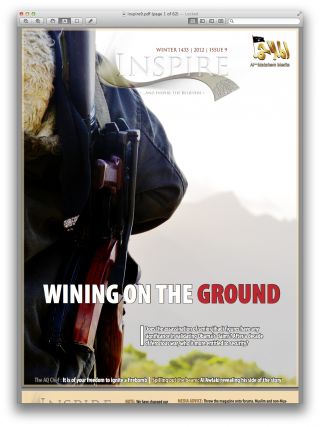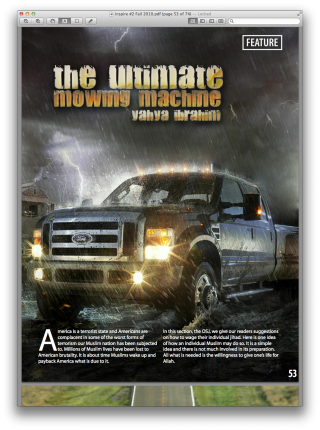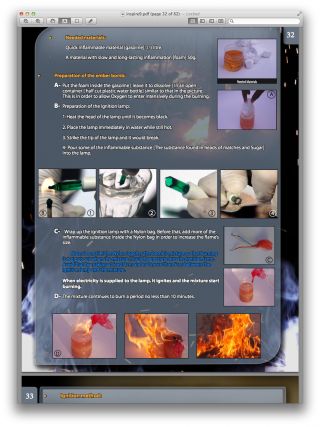Persuasion
Inspire Magazine and the Rise of the Do-It-Yourself Jihadist
A critical look at how an online magazine can influence attitudes and behaviors.
Posted June 12, 2012

In the Summer of 2010, Al Qaeda in the Arabian Peninsula began publishing an online magazine called “Inspire.” Initially, the magazine generated a significant level of both buzz and skepticism. After all, what can a magazine really do to influence terrorist attitudes and behaviors in the real world? There are plenty of examples of the do-it-yourself jihadis displaying shocking levels of incompetence, the likes of which has been brilliantly portrayed in the film Four Lions. So to start, let’s first consider what sets the Inspire magazine apart from other propaganda efforts within the broader Al Qaeda movement.
There are several features that make Inspire unique: First and foremost, the fact that it has slick production values and is published in English is significant because it allows for a much broader reach and accessibility in the U.S. and U.K. than publications and videos that are published in other languages. Second, the writing in Inspire reflects a significant level of familiarity with U.S. policy, media, and culture. Of course, this is largely due to the fact that both Anwar al-Awlaki and Samir Khan played important roles in writing and editing. Over the course of its first 7 issues (while Khan and Awlaki were both alive, prior to being killed in a drone strike on September 30, 2011), the quality of the magazine continued to develop and mature. Inspire formulaically provides a wide range of content that includes informational, motivational, and skills-building elements. In fact, if one were trying to design an intervention to cover all of the requisite bases necessary to maximize the likelihood of behavior change—these are precisely the areas that would be targeted.

Third, the magazine regularly featured a wide range of topics—from testimonials about the 'jihadi experience' to other articles that provided plenty of examples of jihadists - implying a significant level of normative support for involvement (for instance, in the Fall 2010 Issue Samir Khan wrote about why he was proud to be a traitor to the United States). One of the hallmarks of Inspire is the abundant descriptions of heroes and martyrs (perhaps best exemplified by the stories and editorializing that followed the death of Osama Bin Laden), and a regular focus on the plight of Palestinians that evidently had the goal of establishing both a common identity and solidarity, while simultaneously portraying Israel and the U.S. as dangerous and threatening to Muslims everywhere.
Fourth, and this is where the potential of the Inspire magazine seems to be especially important, is its regular inclusion of developing ideas along with the skills and operational capabilities necessary in turning those ideas into reality. Over its 9 issues, there are numerous guides to planning terrorist operations, along with step-by-step practical guides covering a wide range of terror and combat tactics that could be employed by an aspiring jihadi. For example, there have been guides on developing and using explosives and firearms (including a detailed guide on the correct use of an AK-47). Further, Inspire magazine regularly includes a section on "open source jihad" (a term used by Zachary Chesser to connote a range of tactics and techniques that could readily be employed by just about anyone with sufficient motivation). Here, some of the more news-worthy tactics were detailed – take for instance the ‘ultimate mowing machine’ in the Fall 2010 issue, which describes the process of welding pieces of metal to the bumper of a pickup truck or SUV and then driving through crowded areas.

At first glance, this seems fairly preposterous—something that might be better suited to the movies than to something that could actually happen. But that is really not quite the point—rather, the idea is that with some creativity and ingenuity an aspiring jihadist could come up with especially horrifying tactics that would serve to garner a huge amount of media coverage, while inflicting significant casualties on the public.
More recently, in the latest issue of Inspire, there is a detailed guide to how one could cause forest fires that would cause massive economic damage and potentially significant loss of life.

In this article, there are several critical pieces of information (for instance, which kinds of wood, and types of forest are most likely to burn the best; and why a fire can travel uphill especially well; along with seasonal variations and weather patterns that are important to know when considering how to develop a plan). In addition to the requisite background information that is included, there is a significant emphasis on skills and abilities that are required to pull off such an attack. Specifically in this case, there are descriptions for several types of devices that could be used to get the fire going.
Finally, there are several examples that have indeed shown that the magazine has played a direct and instrumental role in informing—if not influencing—actual behaviors. For example, recently tried and convicted soldier Jason Abdo, who was planning an explosive attack at Ft. Hood (the site where Nidal Hassan, inspired by Anwar al Awlaki, shot and killed 13 of his colleagues) reportedly learned bombmaking techniques from an article titled "how to build a bomb in the kitchen of your mom" which appeared in the Summer 2010 inaugural issue of Inspire. So while it might be quite tempting to summarily dismiss the imaginative and far-fetched plots of Inspire, ignoring the threat it represents would be an unfortunate and potentially very costly mistake.
To date, 9 issues of Inspire have been released. The fact that Issues 8 & 9 were published is pretty remarkable, given the fact that the two most instrumental figures in its production were killed, leaving what seemed to be an all-but-unfixable void. Granted, the editorial quality of these issues was clearly and understandably lacking in comparison with earlier issues. However, in light of the release of the so-called “Bin Laden documents” that came within days of the release of the latest issues of Inspire, it is easy to see why the magazine was almost completely overlooked. Because it has many of the ingredients that have the potential to influence and change attitudes and behaviors, Inspire magazine certainly merits close scrutiny, especially if it manages to continue.


